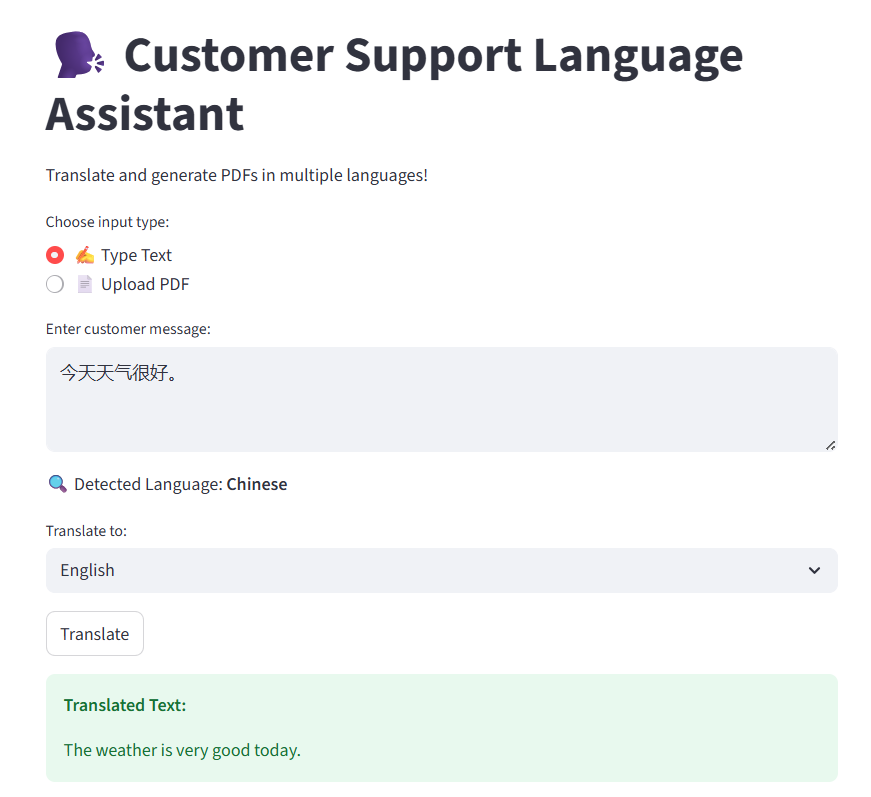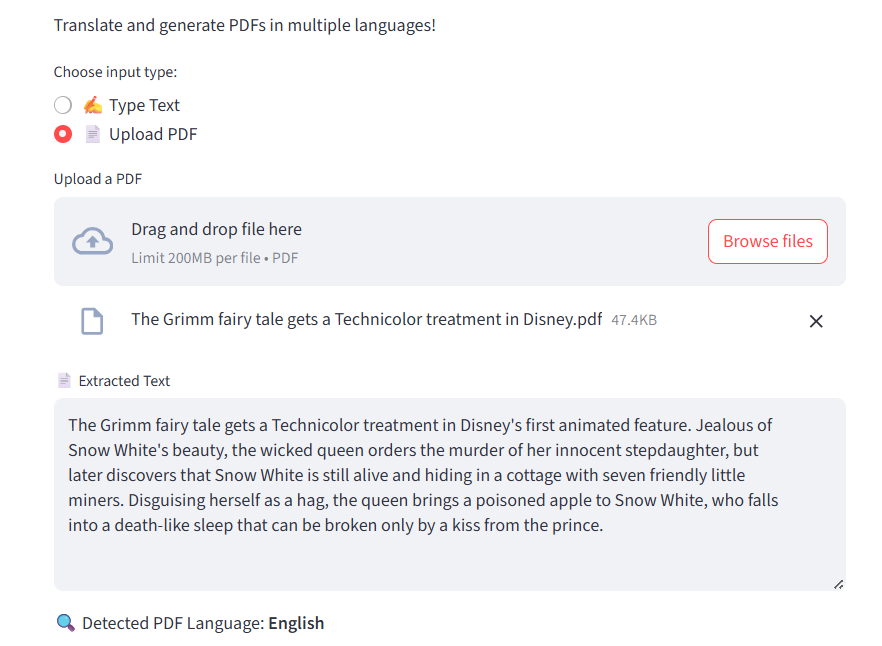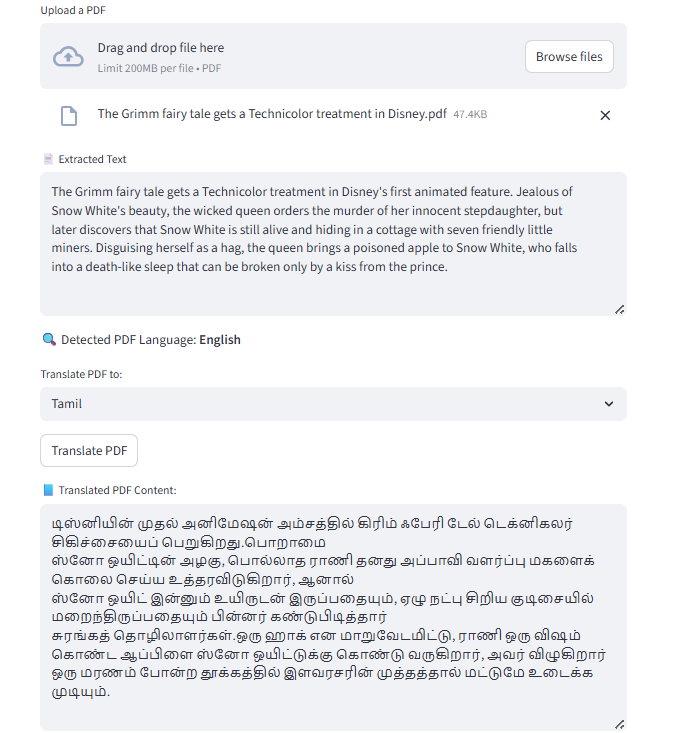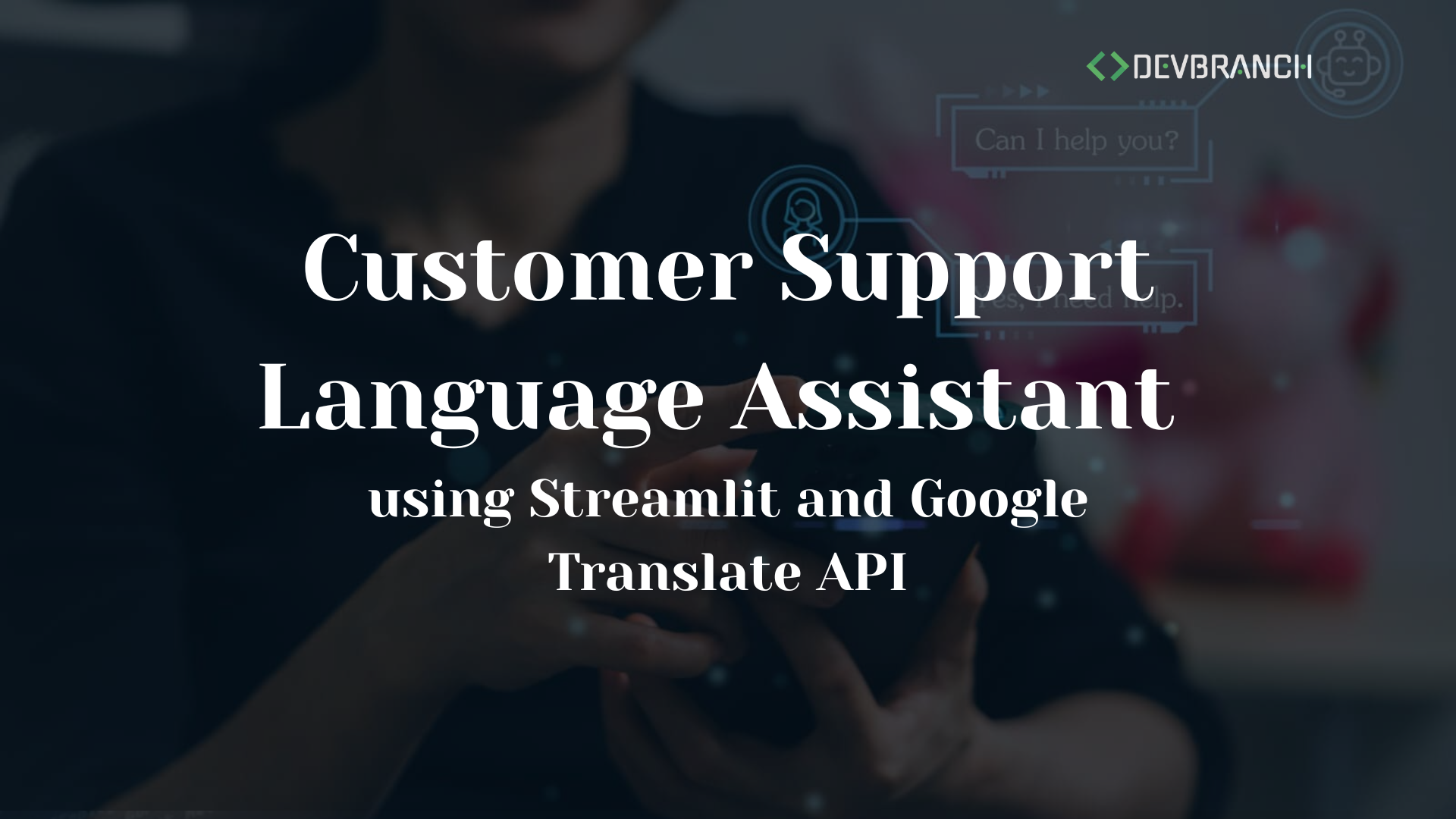Building a Customer Support Language Assistant using Streamlit and Google Translate API
In today’s globalized world, language differences continue to be one of the most significant barriers to effective communication. With over 7,000 languages spoken worldwide, connecting with people across regions and cultures can be challenging. These language gaps affect essential areas such as customer service, education, healthcare, business, and everyday interactions.
Traditionally, translation services were either expensive, time-consuming, or limited in scope. However, modern advancements in artificial intelligence and cloud computing have paved the way for powerful real-time translation tools. One of the most prominent examples is Google Translate, which has become a go-to solution for multilingual communication.
In this blog, you’ll learn how to build a simple yet powerful language translator web application using Python, Streamlit, and the Google Translate API. This application is designed with customer support in mind, but can easily be adapted for broader use. It includes:
- Automatic language detection and translation into any selected target language.
- Support for both Latin and non-Latin scripts, including Arabic, Chinese, Korean, and Japanese.
- PDF document translation, useful for sharing or reading foreign-language materials.
- A clean, user-friendly interface powered by Streamlit, requiring no coding knowledge to use.
- A built-in workflow that helps customer service agents reply in their own language and have the response automatically translated for the end-user.
With this tool, individuals and support teams can communicate across languages more efficiently and effectively, whether for business, education, or travel. This project demonstrates how accessible and scalable real-time translation technology can be using modern Python tools.
SIGNIFICANCE OF LANGUAGE DETECTION AND TRANSLATION
Language detection and translation play a key role in promoting intercultural communication. These tools allow users and customers to exchange messages without needing a third party, making conversations faster and more private.
Thanks to recent advancements in Natural Language Processing (NLP) and Machine Learning (ML), it’s now possible to create applications that detect and translate languages in real-time with high accuracy. These technologies are widely used in industries such as
- Healthcare – for doctor-patient communication across languages
- Customer Service – for multilingual support
- Social Media Moderation – to understand and moderate content in various languages
- International Business – to bridge communication gaps between global teams
Despite these advances, many existing tools handle language detection and translation as separate services, requiring users to switch between platforms or tools which can be time-consuming. That’s why there’s a growing need for applications that combine language detection and translation into one seamless solution
TOOLS AND TECHNOLOGIES USED
To build the language translator application efficiently, the following tools and libraries were used. Each plays a critical role in enabling machine learning, data processing, UI design, and API interaction
- Streamlit – A Python library used to create a simple and interactive web app interface.
- Google Translate API – Helps translate text from one language to another in real time.
- Pandas – Used to handle and process data (like reading files or managing text).
- NumPy – Supports mathematical operations and array handling in the background.
- Scikit-learn (sklearn) – Used for machine learning tasks like splitting data and training models (optional for advanced use).
- PyMuPDF – Helps extract text from PDF files for translation.
IMPLEMENTATION OVERVIEW
This language assistant web app is developed using Python and various open-source libraries. Below are the implementation steps with details on the tools and technologies involved
INPUT HANDLING
- Tool Used – Streamlit, PyMuPDF
- How It’s Used -Streamlit provides the user interface to input text or upload a PDF. If a PDF is uploaded, PyMuPDF extracts text from the PDF file for translation.
LANGUAGE DETECTION
- Tool Used – langdetect
- How It’s Used – The langdetect library automatically detects the language of the input text. This helps in identifying the source language before translating it.
from langdetect import detect, DetectorFactory
DetectorFactory.seed = 0 # to make language detection consistent
def detect_language(text):
try:
return detect(text)
except:
return "unknown"
lang_code = detect_language(user_input or pdf_text)
lang_name = LANGUAGES.get(lang_code, f"Unknown ({lang_code})")
st.write(f" Detected Language: **{lang_name}**")TEXT TRANSLATION
- Tool Used – googletrans (Google Translate API)
- How It’s Used – Translates the detected text into a selected target language using Google’s translation service. Supports over 100 languages, including Sinhala, Tamil, English, and more.
from googletrans import Translator
translator = Translator()
def translate_text(text, dest_lang):
try:
return translator.translate(text, dest=dest_lang).text
except Exception as e:
return f"Translation failed: {str(e)}"
dest_lang = st.selectbox("Translate to:", list(LANGUAGES.values()), index=0)
dest_code = list(LANGUAGES.keys())[list(LANGUAGES.values()).index(dest_lang)]
if st.button("Translate"):
translated = translate_text(user_input, dest_code)
For PDF
if st.button("Translate PDF"):
with st.spinner("Translating PDF content..."):
translated_pdf_text = translate_text(pdf_text, dest_code)
PDF GENERATION
- Tool Used – FPDF, DejaVuSans.ttf font
- How It’s Used – After translation, the app allows users to download the translated result as a PDF.FPDF is used to generate the PDF, and DejaVuSans.ttf ensures multilingual character support (for non-Latin text like Chinese, Sinhala, Tamil).
WEB INTERFACE
- Tool Used – Streamlit
- How It’s Used – Used to build the entire interactive front end of the app. Users can type, upload, select languages, and download results, all within the web UI created using Streamlit.
import streamlit as st
st.set_page_config(page_title="Customer Support Language Assistant", layout="centered")
st.title("Customer Support Language Assistant")
st.markdown("Translate and generate PDFs in multiple languages!")
RESULTS AND ANALYSIS
DETECTION AND TRANSLATION OUTPUT INTERFACE

Application’s output for detecting and translating a variety of input messages. The input text is analyzed based on language characteristics, then accurately detected and translated into the specified target language.
PDF CONVERSION TO SPECIFIC LANGUAGE

OUTPUT OF PDF CONVERSION TO SPECIFIC LANGUAGE

This shows the functionality of the PDF translation module. Users can drag and drop any .pdf file into the application, which then processes the document by detecting its language, translating the content, and generating a translated PDF output.
CONCLUSION
The Customer Support Language Assistant is a versatile web application designed to overcome language barriers in global communication. While this project was developed with certain constraints, it successfully addresses critical needs by providing
- Accurate language detection and translation of input text within a user-friendly interface.
- PDF document language identification and translation, which aids both users and customer service agents in understanding and responding to multilingual content.
Thanks to integration with the Google Translate API, the system achieves over 90% accuracy in detecting and translating more than 100 languages, demonstrating its effectiveness, particularly in scenarios involving expats and international communication. The application’s interface, built using Streamlit, ensures ease of use for a broad range of users. However, some limitations remain, such as
- Handling mixed-language or multilingual inputs.
- Dependence on an active internet connection for translation services.
- Lack of support for voice input.
Addressing these issues will enhance the system’s scalability, versatility, and usability across various communication touchpoints. Looking forward, this project holds significant potential for further development. Possible future improvements include
- Creating offline versions to support environments with limited connectivity.
- Expanding the language database to cover more diverse and low-resource languages.
- Integrating additional features such as voice recognition, image, and video translation.
Derived from machine learning models and cloud-based APIs, this application sets a solid foundation for advancing multilingual communication tools in customer support and beyond

